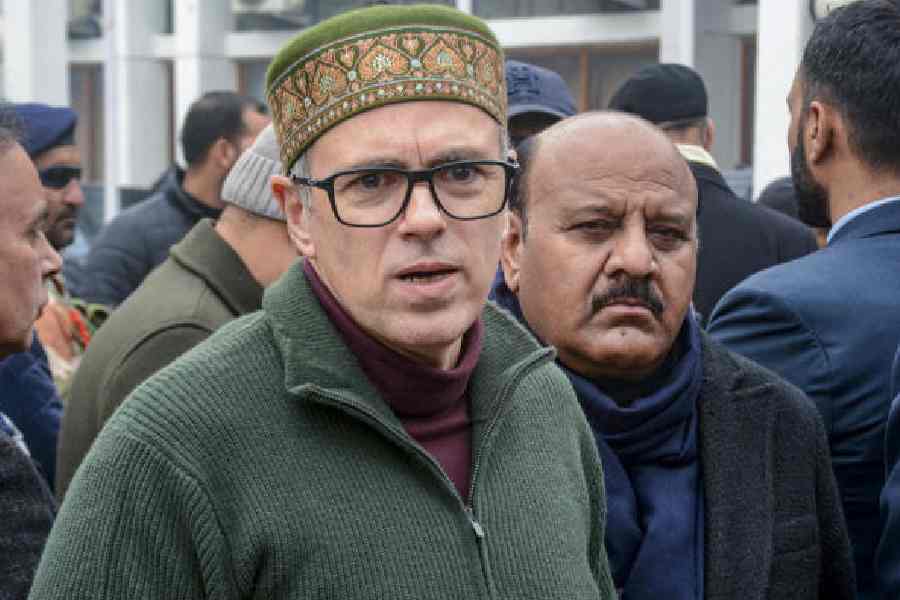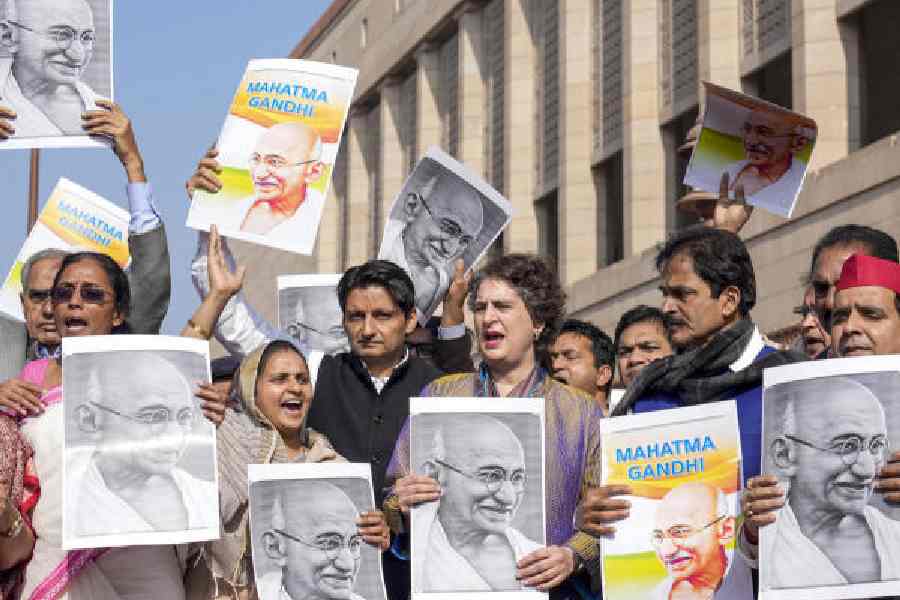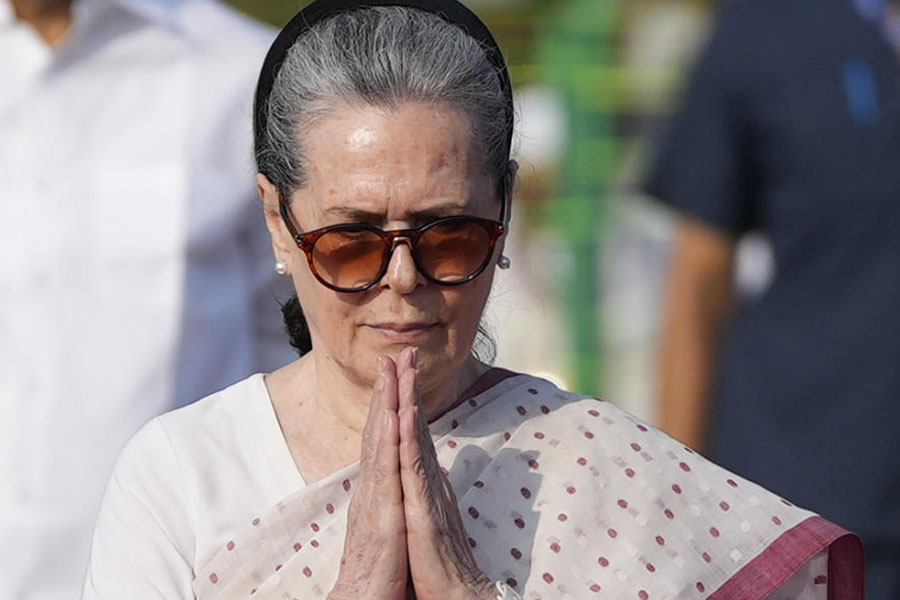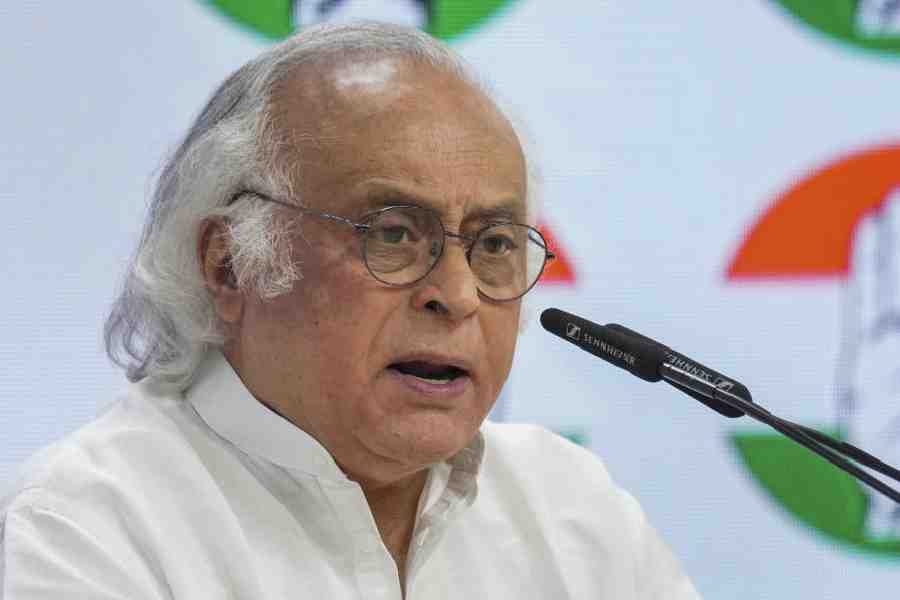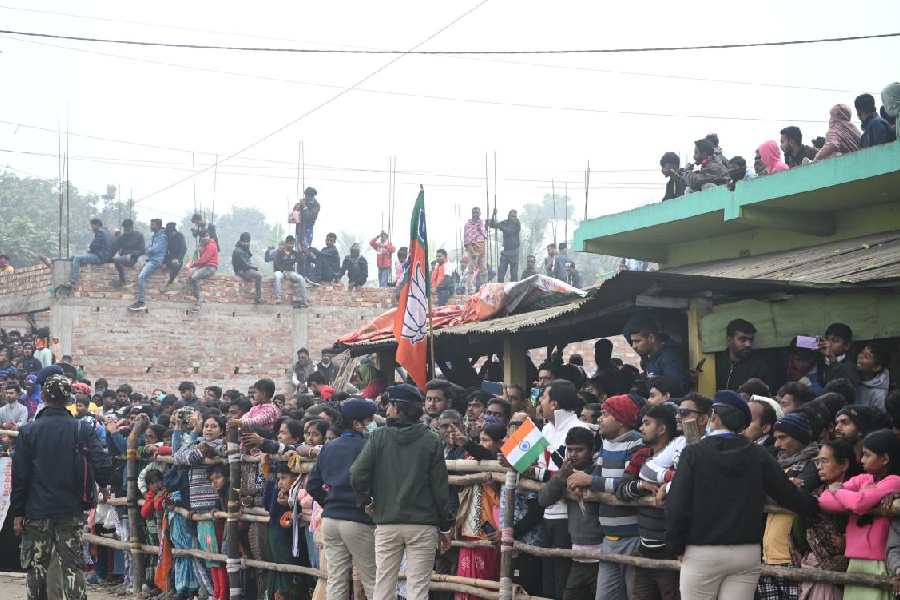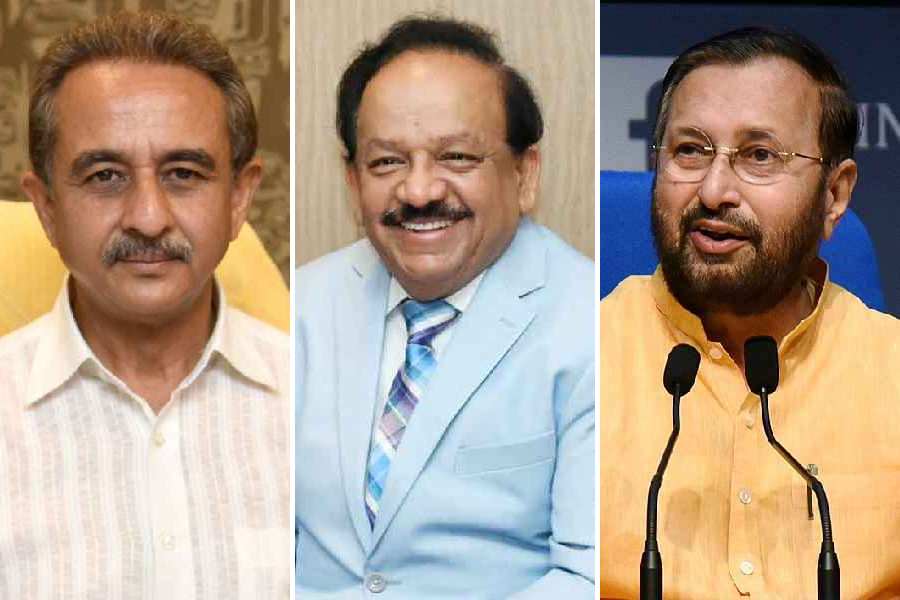 |
| Women water a plant in the backyard of their house in Baunsi. Picture by Amit Kumar |
Baunsi (Banka), May 4: Manju Baski, Pakku Soren, Sonmuni Marandi and Bitimor Soren from the sleepy Ambona village under Baunsi block of Banka used to spend their days, till recently, collecting forest products. Suffering from penury, the only source of income for these women from the Naxalite-hit village was selling country-made liquor.
Their lives are now set for a turnaround, courtesy the tribal development fund (TDF), sponsored by Nabard.
Under this system, Nabard, through its regional office in the state, sanctioned two projects of wadi model farming in the tribal villages under Katoria, Chandan and Baunsi blocks of the district, in 2009.
The wadi model, an approach for ensuring livelihood through horticulture, is being managed by non-governmental organisation Pradan and Indian Rural Association (IRA). More than 200 families in 22 villages under Kairi, Sanga and Saanpdahar panchayats, have benefited from this programme that encourages the villagers to cultivate mangoes, amla (gooseberry), bamboo and Arjuna plants that host silk worms, in their own backyards and kitchen gardens.
“We can now send our children to school. Our income opportunities, too, will expand over the next five years,” said Batiya, another villager to benefit from the model.
“It was difficult to believe that there could be such a programme that would allow us to cultivate these plants on our own land. We were also suspicious of the claims of IRA officials that the ownership of both the products and the land would remain with us,” said Manjari, one of the villagers.
Marandi added: “However, when we heard of the watershed development done by IRA in the nearby villages, we, too, were interested.”
“We can now send our children to school. Our income opportunities, too, will expand over the next five years,” said Batiya, another villager to benefit from the model.
Nabin Kumar Roy, district development manager, Nabard, Bhagalpur, said: “Initially we had a few problems in convincing the villagers. But the ice was broken because of the intervention of some motivated and educated youths of the village. Finally, the villagers gave their consent to be covered under the programme.”
The agency organised willing farmers into wadi samitis and selected one Bihari Murmu as the wadi leader.
“From time to time, we have had opportunities to get training and video shows on work like pit digging, manuring and plantations. The actual wadi layout was done after that and the work started,” said Murmu.
The plantations at Ambona under Kairi panchayat of Baunsi block were started in the monsoon of 2010 with plantation material from Arambagh nurseries.
“The plants are growing rapidly with special care. We hope to enjoy their fruits within three to four years,” said Basanti Murmur, one of the cultivators.
The agency, under the guidance of Nabard, is also working for the sanitation, health, literacy and financial inclusion issues.
During wadi samiti meetings, issues of grazing and difficulty in providing irrigational facilities are brought up repeatedly. The agency, along with the wadi samiti, has decided to pool in the amount available under the component of irrigation at Rs 450 per farmer to purchase a cycle-mounted drum with 50 feet of plastic pipes for watering the horticulture plants.


